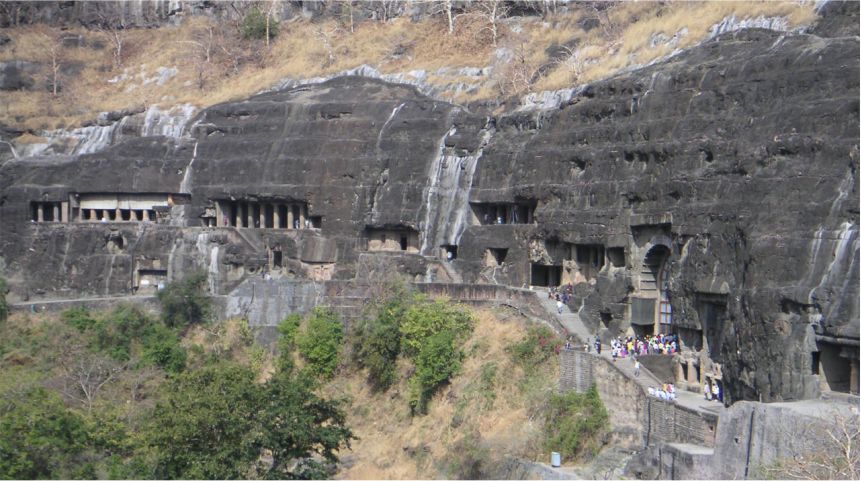
Ajanta Caves
Buddhist rock-cut cave temples and monasteries, located near Ajanta village, north-central Maharashtra state, western India, that are celebrated for their wall paintings. The temples are hollowed out of granite cliffs on the inner side of a 70-foot (20-metre) ravine in the Wagurna River valley 65 miles (105 km) northeast of Aurangabad, at a site of great scenic beauty.
The group of some 30 caves was excavated between the 1st century BCE and the 7th century CE and consists of two types, caityas (“sanctuaries”) and viharas (“monasteries”). Although the sculpture, particularly the rich ornamentation of the caitya pillars, is noteworthy, it is the fresco-type paintings that are the chief interest of Ajanta. These paintings depict colourful Buddhist legends and divinities with an exuberance and vitality that is unsurpassed in Indian art. The caves were designated a UNESCO World Heritage site in 1983.
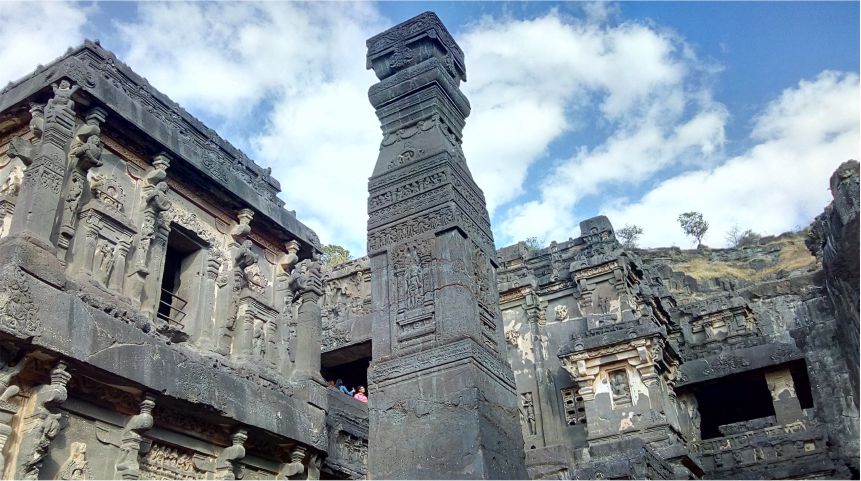
Ellora Caves
The invaluable ensemble of 34 caves at Ellora in the Charanandri hills of western India’s Maharashtra State showcases a spirit of co-existence and religious tolerance through the outstanding architectural activities carried out by the followers of three prominent religions: Buddhism, Brahmanism, and Jainism. The rock-cut activity was carried out in three phases from the 6th century to the 12th century. The earliest caves (caves 1–12), excavated between the 5th and 8th centuries, reflect the Mahayana philosophy of Buddhism then prevalent in this region. The Brahmanical group of caves (caves 13–29), including the renowned Kailasa temple (cave 16), was excavated between the 7th and 10th centuries. The last phase, between the 9th and 12th centuries, saw the excavation of a group of caves (caves 30–34) reflecting Jaina philosophy.
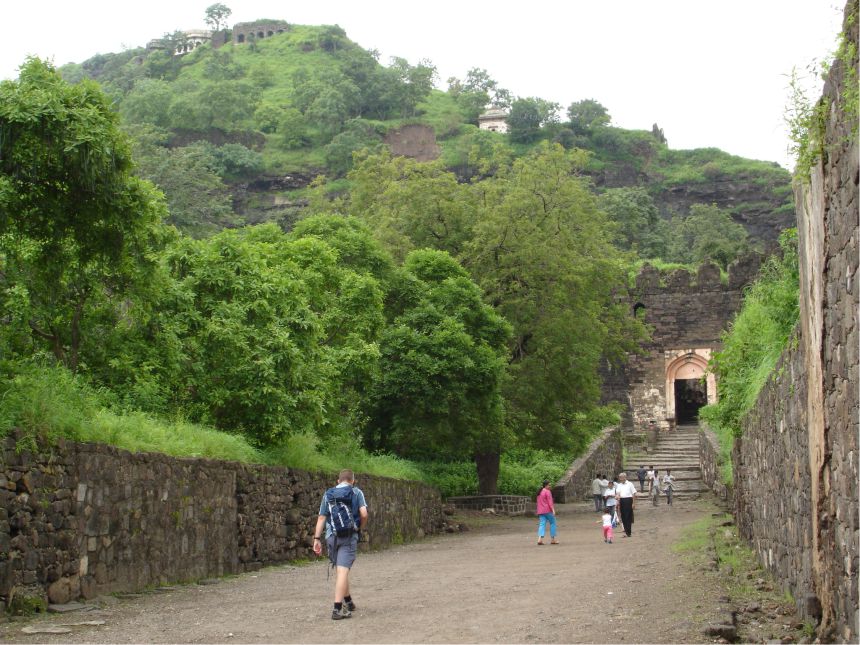
Daulatabad Fort
This fort was built by the Yadava dynasty in 1187 and was known as Deogiri. When Muhammad Tughlak ascended the Delhi throne, he was so taken by the fortress that he decided to move his court and capital there, renaming it Daulatabad, "the City of Fortune". He ordered the entire population of Delhi to move out en masse to the new capital. Some of the prominent structures within the fort complex include the Mahakot which comprises four distinct lines of walls with 54 bastions that surround the fort for a length of nearly 5 kilometres. The walls are between 6 to 9 feet thick and 18 to 27 feet high with ammunition depots and granaries built along the interiors. Another interesting spot is the Hathi Haud a gigantic water tank admeasuring 38 x 38 x 6.6 meters with a capacity of about 10,000 cubic meters.A 5 kilometer strong wall, artificial scarping and a complicated series of defenses made Daulatabad Fort secure. The 30 meter high Chand Minar (Tower) built much later with 3 circular balconies played a defensive and religious role in the Fortress.
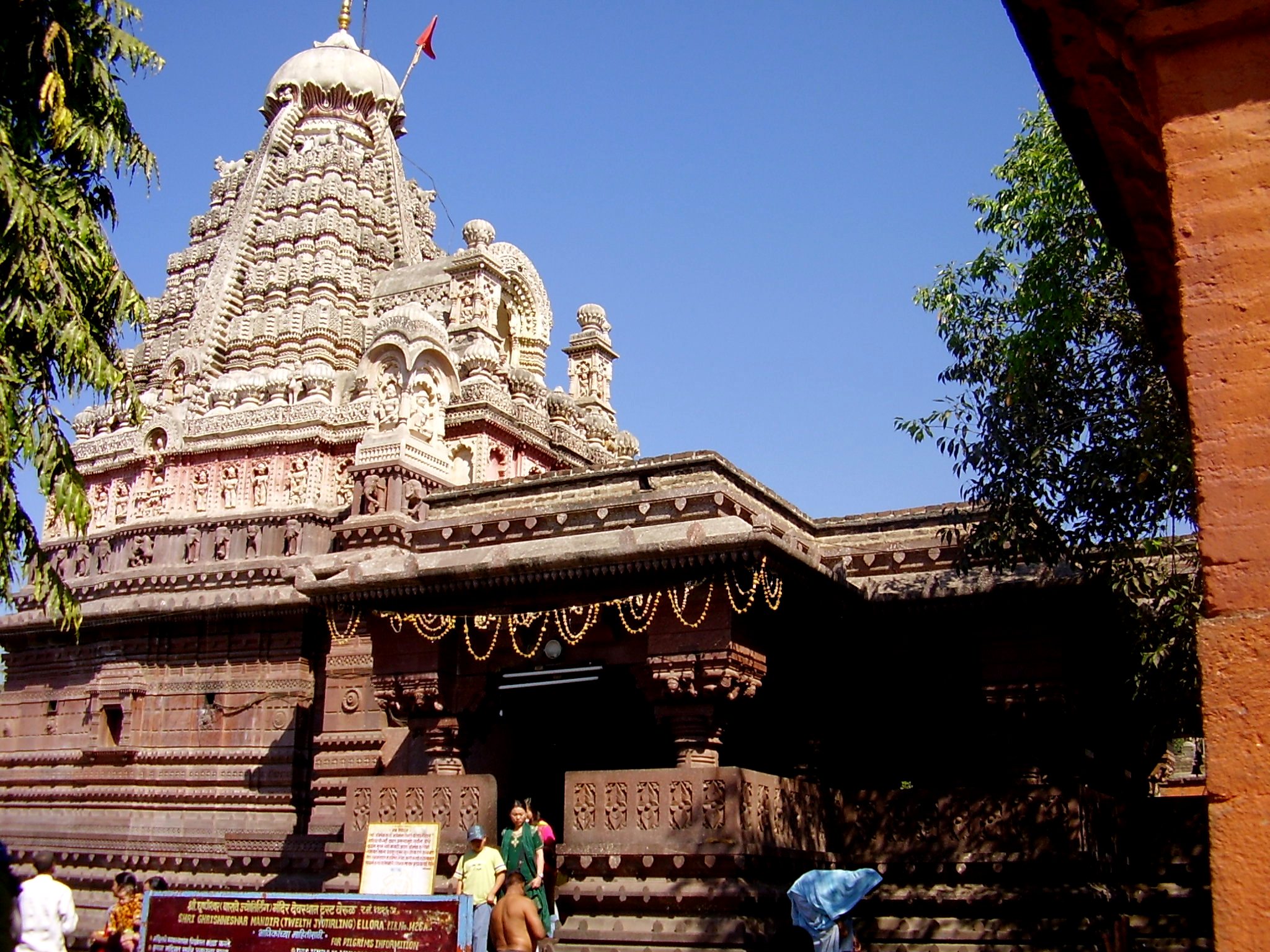
Grishneshwar Temple
Grishneshwar Temple dedicated to Lord Shiva is one of the holiest Hindu pilgrimage sites in India. Located about 35 km away from the city of Aurangabad and about 2 km away from the UNESCO-listed Ellora Caves, it is home to the 12th and the last Jyotirlinga on earth. It is an ancient shrine that finds mention in the Shiva Purana, one of the sacred scriptures in Hinduism. The temple, which is believed to have been built in the 13th century, was repeatedly destroyed and rebuilt during the reign of the Mughals, and was rebuilt in its present form in the 18th century. Today, the temple serves not just as a religious site but also as a key attraction in Maharashtra tourism, especially for travelers visiting the Ellora Caves.
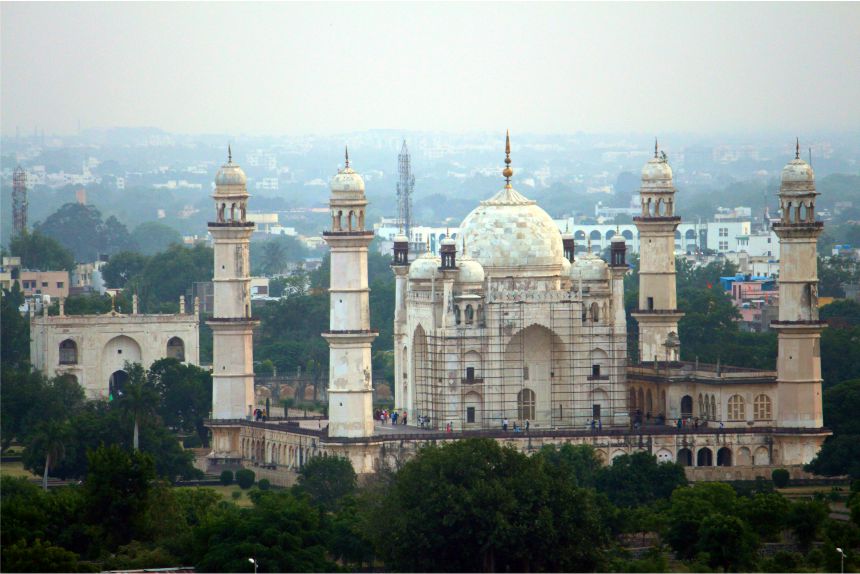
Bibi ka Maqbara
A symbol of remembrance, Bibi Ka Maqbara is almost indistinguishable from another memento of love and its inspiration, the Taj Mahal. It might be a derivative of the Taj but the mausoleum stands proud as an expression of a son’s love for his mother and has its own wandering evocations. Also called the Tomb of the Lady, Bibi Ka Maqbara was designed by Ataullah, the son of Ahmad Lahauri, the architect of the Taj Mahal which explains its appearance heavily based on the prime marvel. Related to each other in ways more than one yet separated by time, magnitude and miles both the mausoleums are exemplary depictions of love, memory and loss. While the first memorial, Taj Mahal belongs to Aurangzeb’s mother, the second, Bibi Ka Maqbara is dedicated to his wife – both the tombs immortalising these women in the chapters of history and alluding to the despotic yet the last influential Mughal emperor.
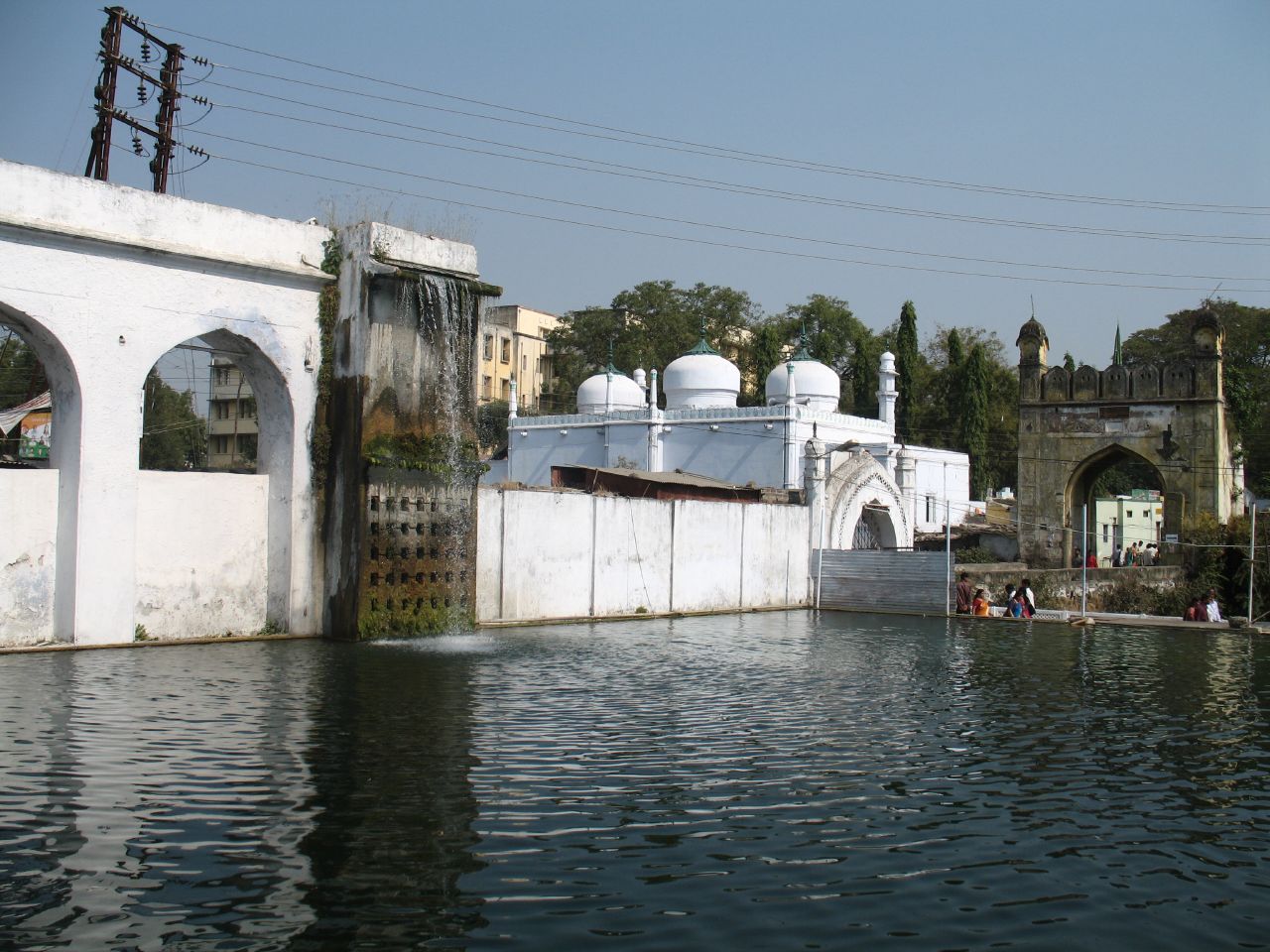
Panchakki
Also known as the water mill, the name Panchakki is derived from the mill which used to grind grain for pilgrims. Located in the heart of the city, this attraction is a typical example of medieval engineering which was built in 1744 AD. In fact, the complex of Panchakki was once the abode of the great Sufi saints who came to India around the 12th century. It was the residence of the popular saint “Baba Shah Musafir”. The Panchakki with its own elaborate underground channel was ingeniously designed to use the energy generated by the flowing water from a nearby spring to turn the large grinding stones of the flour mill. The ground grain was used for pilgrims, disciples of saints and the troops of the garrison. Water, till date is carried by clay pipes from the source which is about six kilometers away at the north of the city. The water is made to flow into a huge elevated masonry pillar from where it empties down into the main tank
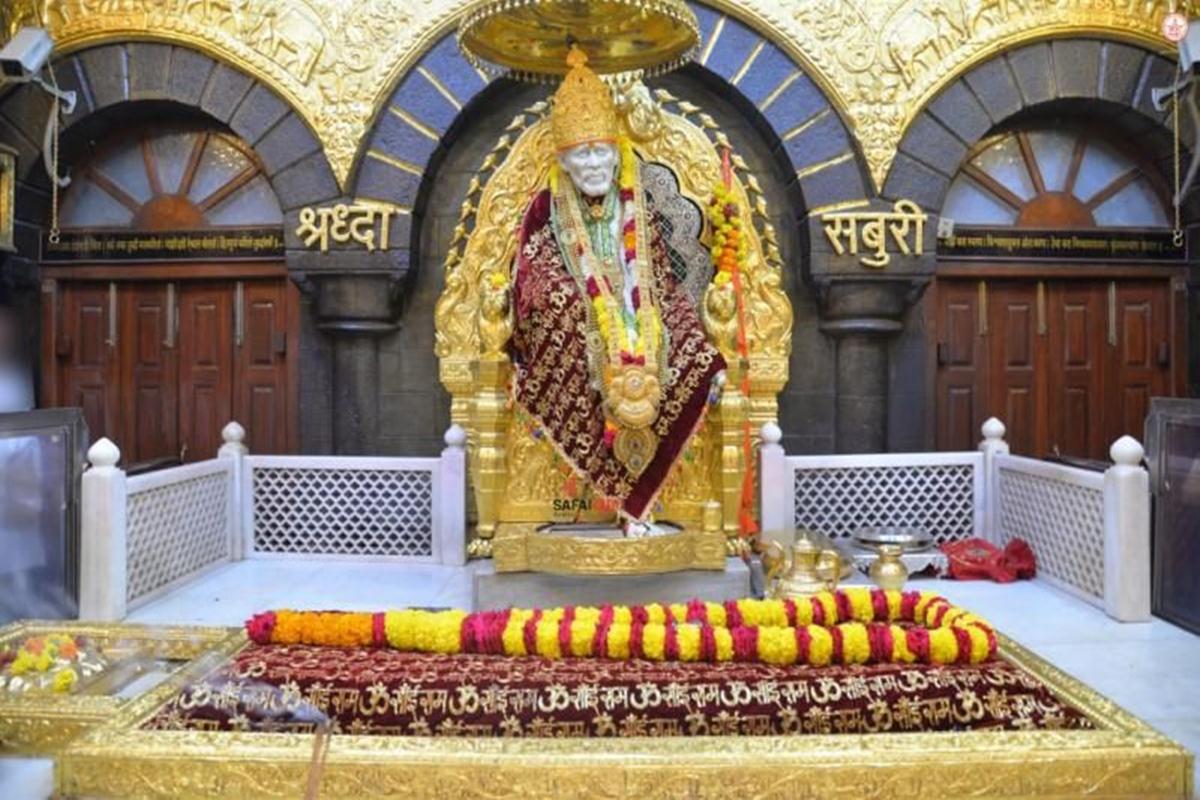
Shirdi
The small town of Shirdi is a popular destination for pilgrims from all over the world. Known as the abode of Shree Sai Baba, the town is one of the most visited pilgrimage sites in Maharashtra. Built in 1917-18, Shree Sai Baba Temple is the main attraction in Shirdi. It is also the place where Baba was laid to eternal rest. Devotees can also see the Samadhi site when they visit the temple.
To get a glimpse into the fascinating life of Sai Baba, the first floor of the temple showcases a collection of pictures and artefacts that depict his life. Apart from the temple, you can also visit Gurusthan - the place where Sai Baba spent most of his time when he first came to Shirdi. Filled with beautiful stories of Sai Baba, the town is a must-visit for devotees and history enthusiasts alike.

Shani Shingnapur
Shri Shaneshwar Devasthan Shanishingnapur’s legend in Taluk Naivasa of District Ahmednagar is famous, far and wide, as the shrine of countless devotees. The number of its unbelievable miracles finds its place of pride in The Guinness book of World Records. Ahmednagar’s population is known popularly as the place of saints. God Shani occupies a place of fear in the minds of most people in India. There is needless terror about God Shani in the minds of people. Unlike other Gods in the pantheon, why are you scared of God Shani? Although he is your friend, and not your enemy? In our day to day life, there is a great place of importance for strength and mercy in our lives.

Jayakwadi Dam
Jayakwadi dam is an earthen dam located on Godavari river at the site of Jayakwadi village in Paithan taluka of Aurangabad district in Maharashtra, India. It is a multipurpose project. The water is mainly used to irrigate agricultural land in the drought-prone Marathwada region of the state. It also provides water for drinking and industrial usage to nearby towns and villages and to the municipalities and industrial areas of Aurangabad and Jalna districts. The surrounding area of the dam has a garden and a bird sanctuary.
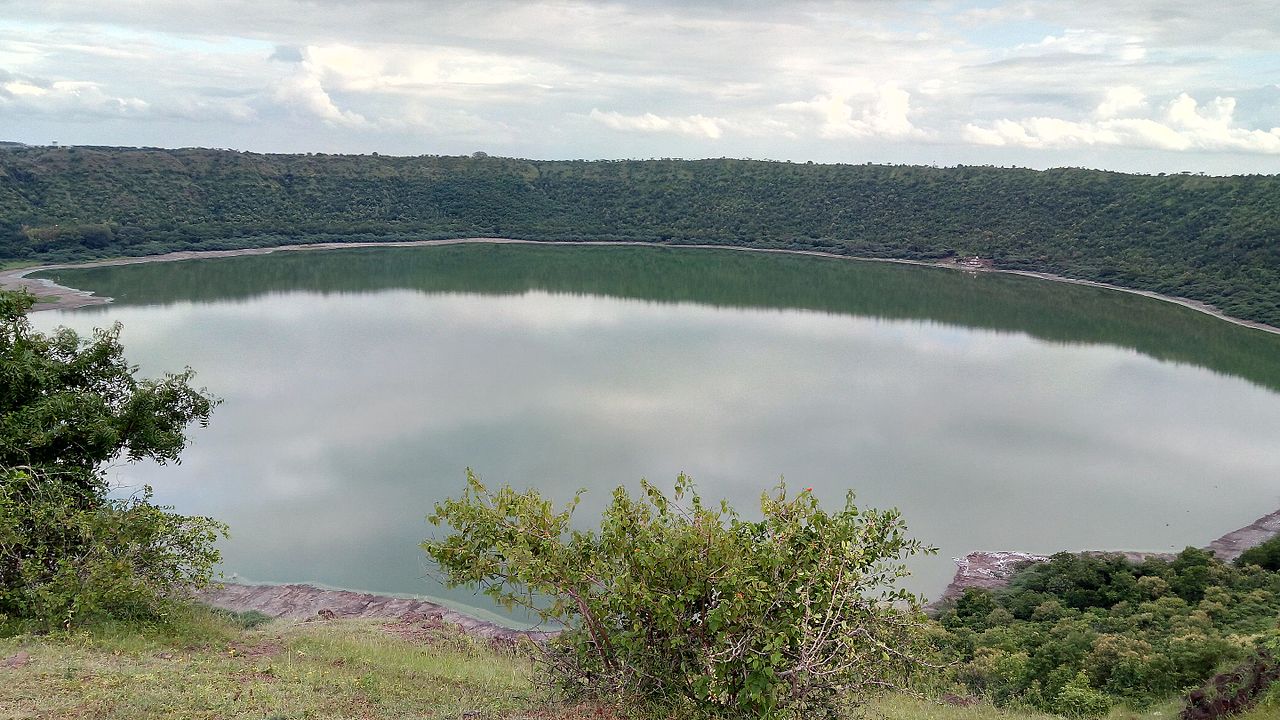
Lonar
Maharashtra is home to a variety of heritage sites but none surpass the uniqueness of the meteorological marvel that is the Lonar Crater. Based in the Buldhhana district of Amravati, Lonar was formed as a result of a meteor collision that occurred roughly 50,000 years ago that created a dense crater with a rim of 1.8 kilometres and a partly alkaline and partly saline lake within. It has links to mythology too - locals believe the lake was formed when a demon named Lonasura was pushed into the netherworld by Lord Vishnu.
Its mysterious origins and religious roots have made the site a notable tourist attraction. The temples nearby are more than a thousand years old, while the presence of migratory birds has made it a popular spot for wildlife photographers to visit. Scientists have aptly named Lonar the bowl of biodiversity, it is one of the only four basaltic rock craters in the world and has been classified as a national geo-heritage monument.
